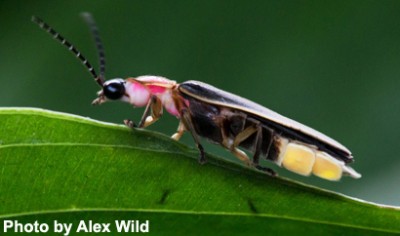Citizen Scientists Needed for the Vanishing Firefly Project
By Erin Weeks
Originally Published on EntomologyToday.org
 Finding a mate can be hard enough in the animal kingdom, but nocturnal creatures face an added difficulty — locating potential partners in the dark. It’s a problem many insects have solved by evolving an array of mating signals that engage all of the senses: crickets chirp, moths follow pheromone trails, fireflies glow and blink.
Finding a mate can be hard enough in the animal kingdom, but nocturnal creatures face an added difficulty — locating potential partners in the dark. It’s a problem many insects have solved by evolving an array of mating signals that engage all of the senses: crickets chirp, moths follow pheromone trails, fireflies glow and blink.
These signals don’t just attract other insects — they’ve also become cultural touchstones for humans. Singing crickets have been immortalized in folklore across the globe, and, at least in the West, “lightning bugs” are part of what makes hot summer nights so evocative and nostalgia-inducing.
“That’s the best thing about fireflies, they’re something people around the world have strong feelings for,” said Juang-Horng “JC” Chong, an entomologist at Clemson University in South Carolina. Those strong feelings launched Chong and another Clemson professor, Alex Chow, on a project that’s turned a simple question — are fireflies disappearing? — into a national census of the iconic insect and a citizen-science success story.
The Vanishing Firefly Project began in 2010, not long after biogeochemist Chow experienced a firefly light show for the first time. Chow, who grew up in brightly lit Hong Kong, arrived at a plantation-turned-wildlife refuge on the coast of South Carolina to study nutrient dynamics. The fireflies in the rural area put on an impressive spectacle that spring. But Chow noticed fewer fireflies after prescribed burns of the property’s forest, and he wondered if there was a correlation between the insect’s habitat use and its abundance.